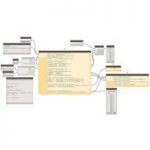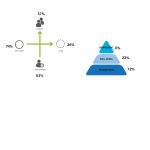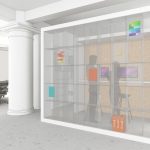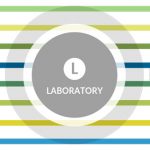Our Water is a policy and design advocacy process for projecting green infrastructure performance for large scale projects, in order to prevent localized flooding, using GIS data. The process leverages statistical methods from demography and ecology to summarize building typologies, which then informs the total area of building rooftops in a fixed geography that are potentially... Read more »

Perkins&Will supports small, focused explorations proposed by staff members with micro-grants of money and time through the Innovation Incubator program. The Innovation Incubator promotes the exploration and development of ideas that improve our work, open new areas of business and stretch our collective creativity. The results of these explorations further our design work, improve our design process and contribute to the knowledge base of our industry.
The program was launched in 2010 and was an immediate success. With more than 700 entries over 20 cycles, sustained interest in the Innovation Incubator at all levels of the firm is testament to its relevance in our ever-growing culture of innovation.
Browse some of the Innovation Incubator projects that have helped grow the profession’s intelligence over the years. Explore more at: innovation.perkinswill.com.

This study is an initial design exercise that seeks to understand the changing landscape of freight delivery, and evaluates two emerging delivery technologies: drones (air) and robots (autonomous ground vehicles (AGVs), or droids) on the built environment. Given that this is a high-level exercise, the sole purpose of this document is to highlight emerging trends... Read more »

Extracting data out of AutoCAD through Excel, recreating polygons based on imported curves, and then modeling from these polygons is an efficient and easy-to-understand method to convert AutoCAD elements to Revit. Due to the different element-specific conditions, eg. modeling columns and rooms from imported curves are two different mechanisms, each scenario shall be categorized and... Read more »
This research proposal is for the development, fabrication and preliminary evaluation of an experimental wearable, ‘pentachromic’ circadian light tracker prototype. By doing so, it would then be possible to record ‘pentachromic’ circadian illuminance indicators for a building’s occupant’s lighting environment alongside responses to intermittent polling targeting information a user’s alertness, cognitive function, psychological state-of mind... Read more »

The well-being, productivity and engagement of employees in commercial buildings are important for creating contemporary working environments. This research article explores different working environments by applying two research methods to evaluate space use—motivational and spatial programming. Five case studies were used to explore the commonality and differences of spatial design and goals based on different industries.The... Read more »

This research article focuses on one of the potential gaps in energy simulations, static occupancy schedules. Static occupancy schedules bring uncertainties to energy models and impact the accuracy of energy modeling outputs. In order to generate reliable dynamic schedules, a new workflow is proposed that integrates measured occupancy behaviors and improved occupancy schedules. This workflow was tested... Read more »

Traditional mentorship can bridge the gap between industry experts and newcomers, however, time and commitment can be barriers to forming these relationships. In this article, we introduce an alternative approach to mentorship that links growing professionals with firm leaders for short-term shadowing opportunities that occur on an ongoing basis. Through observing the mentors’ actions, thought processes and decisions... Read more »

Although the benefits of nature exposure to human health are well documented, less is known about the psychological benefits of exposure to nature indoors. This study observed whether the addition of greenery to a workplace setting improved psychological well-being and performance of employees. A crossover study among 63 adults examined perceived psychological well-being and objective memory task performance... Read more »

Material health is important for every designer, no matter if we specify construction and building materials, finishes for interiors, or ancillary items like furniture and equipment. Information about products and various types of material properties, including their impacts on health, is becoming more prominent. However, lack of guidelines and potential tools that could help us access this... Read more »

Perkins+Will is built upon the idea of interdisciplinary work informed by research. How can we as designers, researchers, architects, strategists, and planners converge with epidemiologists, biologists, exposure scientists, environmentalists, and toxicologists to uncover opportunities for discovery, research, and ultimately solutions?

This chapter describes approaches to advancing knowledge through research at Perkins+Will. Some are practitioner-driven initiatives motivated by real project needs and constrained by project budget and schedule. Others are firm-wide initiatives responding to larger global and competitive issues. Research questions are wide-ranging, addressing issues related to advanced materials, building technologies, environmental and energy concerns, design... Read more »
